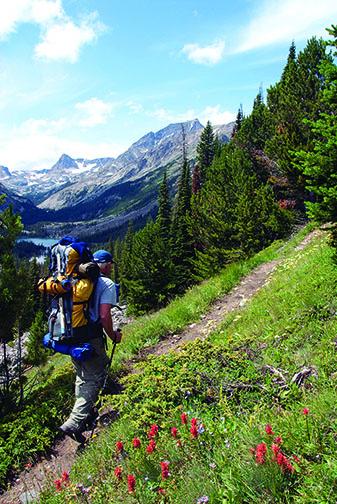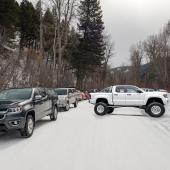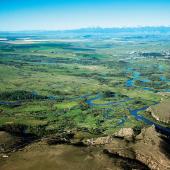A Tale of Two Forests
Custer and Gallatin combine.
Last August, with little fanfare, the Custer and Gallatin national forests became one management unit. One of the most geographically diverse forests in Montana, the Custer Gallatin National Forest encompasses a large section of the Greater Yellowstone Ecosystem, the diversity of the Pryor Mountains, and the remote and undulating hills and plains of far southeastern Montana and northern South Dakota. The now 3.1-million acre forest is comprised of seven ranger districts including Bozeman, West Yellowstone (Hebgen Lake), Livingston (Yellowstone), Gardiner, Red Lodge (Beartooth), and Ashland, along with Camp Crook (Sioux), South Dakota. The forest supervisor’s office is hosted in Bozeman, with a service center in Billings co-located with the Montana-Dakotas BLM State Office.
Many of the services provided by the Gallatin National Forest will remain the same. You can still stop by a ranger district office to pick up firewood and Christmas tree permits, buy a map, or have questions answered. In 2016, there will be a forest-plan revision effort. A forest plan is an important framework document that provides overall guidance to the management of the forest into the future. Numerous opportunities will exist for both formal and informal public input once forest-plan revision is underway.
With two Wilderness Areas, the Lee Metcalf and the rugged Absaroka-Beartooth Wilderness, along with the remote landscapes of the Tongue River Breaks and Chalk Buttes, the Custer Gallatin offers recreationists and forest users a wide variety of activities. From fishing some of Montana’s most iconic waters to collecting firewood or livestock grazing, there’s something for everyone. The forest is also undertaking unique projects, such as developing a budding whitebark pine nursery south of Bozeman, growing blister rust–resistant seedlings for planting in the Greater Yellowstone Ecosystem. We’ll also be working with Stillwater Mining Company, one of Montana’s largest employers, to ensure the stewardship of public lands along with the co-existence of both mining rights and the full suite of public-land uses. As always, we’ll focus on maintaining and improving roads, trail infrastructure, and wildlife habitat, as well as removing non-native fish and preventing the spread of aquatic nuisance species and noxious weeds.
However you enjoy your public lands, you likely call Montana home in part because you love the landscape and the opportunities right outside your back door. The Custer Gallatin National Forest strives to meet the diverse needs of the local people while balancing regional and national needs and sustaining our public lands over the long haul. For more info, visit us at fs.usda.gov/custergallatin.
Mariah Leuschen-Lonergan is the public affairs specialist for the Custer Gallatin National Forest.














